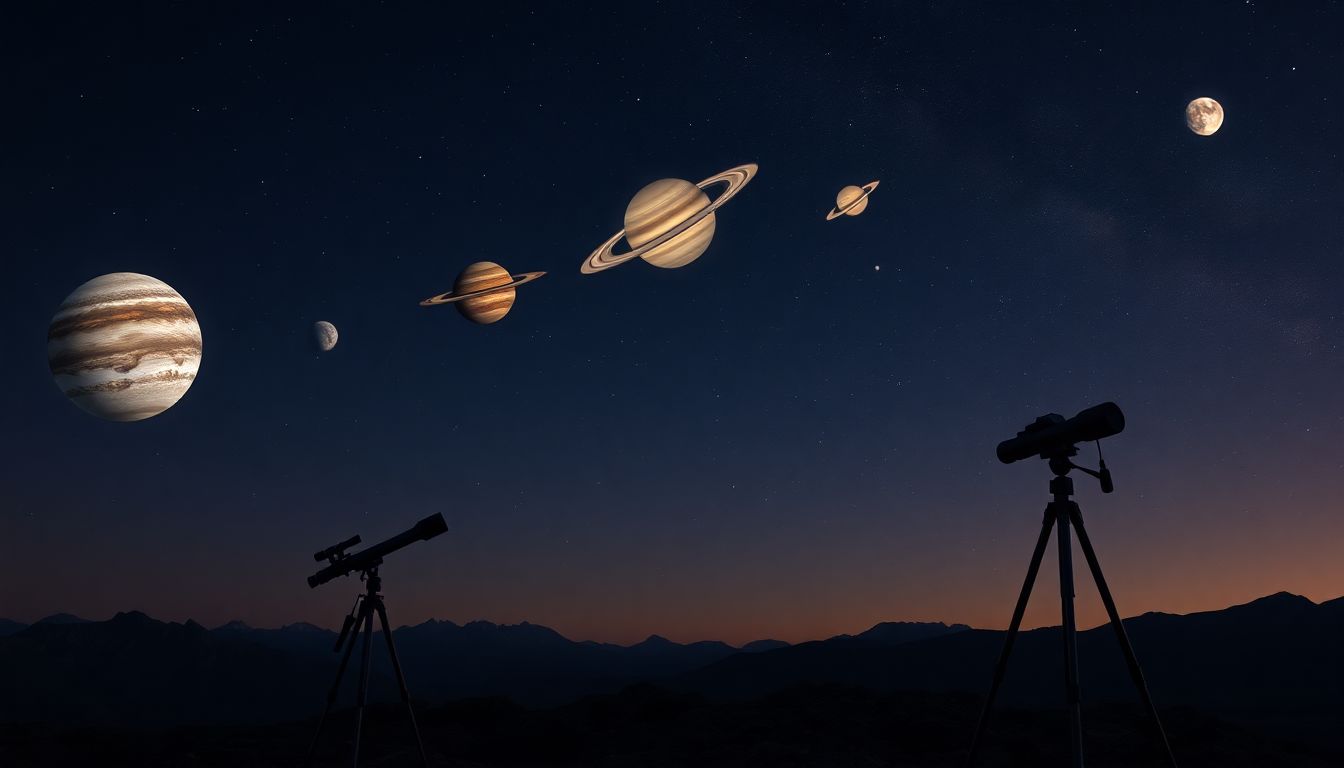
Best Times and Directions to See Planets: A Complete Guide for Astronomy Enthusiasts
Introduction
Planting your eyes on distant planets has fascinated humans for centuries. People across all cultures and ages have looked up at the night sky, dreaming of spotting Mars, Jupiter, or Saturn. But knowing when and where to look makes all the difference in getting a clear view. Whether you’re a beginner or a seasoned skywatcher, timing and direction are key for seeing planets at their best. This guide will help you understand the best times, directions, and tips for observing planets. Expect practical advice, expert insights, and simple techniques that will boost your stargazing nights.
Understanding Planet Visibility: The Basics of Astronomical Observation
Why Timing and Direction Matter in Planet Observation
Planets don’t just hang around in one spot in the sky. They move along paths called orbits. Earth rotates daily, changing where planets appear in our sky. So, knowing where to look and when is crucial. If you watch during the wrong time or direction, you might miss planets entirely. Their position depends on Earth’s rotation and the planet’s orbit, making timing vital for clear views.
Factors Affecting When Planets Are Visible
Many things can affect your ability to see planets. Seasons matter because some planets are more visible at certain times of the year. Light pollution from cities can hide planets, and weather conditions like clouds or fog can block your view. The phase of the Moon also matters—bright moonlight can wash out dim planets. All these factors combine to influence your stargazing success.
Best Times to See Planets: Daily and Seasonal Windows
Optimal Times During the Day and Night
Planets are best seen at night, after the sun sets, when the sky darkens. But some planets, like Venus, can appear just after sunset or before sunrise, shining as bright “morning” or “evening” stars. Twilights—a bit after sunset or before sunrise—can sometimes reveal planets, but the sky’s brightness might limit visibility. The key is clear, dark skies for catch the faint glow of planets.
Seasonal Peak Periods for Major Planets
Each planet has a prime time each year when it appears larger and brighter. For example:
- Mercury is best seen during early mornings or evenings in spring and fall.
- Venus is visible near sunrise or sunset, during specific elongation periods.
- Mars reaches its brightest during opposition, which happens roughly every two years.
- Jupiter and Saturn are most visible when they’re opposite the sun, usually in late summer or fall.
- Uranus and Neptune are fainter and mostly visible with binoculars or telescopes; they peak during favorable oppositions.
Knowing these windows helps plan your nights better.
Influence of the Moon and Other Celestial Events
Avoid bright moon phases if you want sharper views of the planets. New moons, when the moon is invisible, are perfect for dark sky viewing. Take note of special events like planetary oppositions or transits—these are when planets come closest or line up precisely with Earth, presenting fantastic viewing opportunities.
Directions for Viewing Planets: Where to Look in the Sky
General Guidelines for Finding Planets
Start with constellations—planets often move along the band called the ecliptic. Using star maps or free smartphone apps makes finding planets much easier. A compass helps orient yourself, especially in unfamiliar locations. For example, Venus appears in the western sky at sunset when it’s an evening star.
Specific Directions for Major Planets
- Venus: Visible after sunset or before sunrise, found in the western or eastern horizon. It’s often the brightest object in those directions.
- Mars: Usually appears in the southeastern or southwestern sky, depending on the time of night.
- Jupiter and Saturn: Found along the ecliptic plane, often high in the sky during midnight or early morning hours.
- Uranus and Neptune: Near zodiac constellations like Aquarius or Pisces, often near bright stars but require binoculars or a telescope.
Tips for Using Devices and Tools
Use star charts or apps to map out planets’ locations in real-time. When using a telescope, calibrate it correctly to match the sky’s directions. That way, your finderscope and eyepiece will give you accurate views of these distant worlds.
Best Conditions for Viewing Planets: Enhancing Your Observation Experience
Weather Conditions and Light Pollution
Clear, dry nights are ideal for planet viewing. High humidity or clouds scatter light and ruin the view. Light pollution from city lights washes out faint planets and stars. Find a darker spot away from bright lights for the best view.
Choosing the Right Equipment
Start with your naked eye—many planets are bright enough to see without any gear. Binoculars are great stepping stones for wider views. A telescope can reveal planets’ cloud bands and moons, especially for Jupiter and Saturn. Beginners should pick simple, easy-to-use telescopes, while seasoned stargazers can upgrade as they gain experience.
Timing for Clearer Views
Early nights, when the atmosphere is stable, produce less turbulence. Avoid late nights when heat from city lights creates air currents that blur the view. The best time is often just as the sky settles after sunset or before dawn.
Expert Recommendations and Practical Tips
Top astronomers suggest watching for planets during their opposition or greatest elongation. These are prime times to see planets full and bright. For beginners, tracking apps like Stellarium or SkyView can offer real-time guidance. Patience plays a big role—your eyes need time to adjust to darkness, and patience leads to better, clearer views.
Conclusion
Knowing the best times and directions for spotting planets makes your skywatching more successful. Remember, planets are most visible at night, especially during certain seasons. Using constellations, star maps, or apps helps you find them easily. Clear skies, dark dark, and good equipment are your best allies for witnessing these distant worlds. With patience and practice, you’ll turn your night sky into a planetary playground. Keep your eyes open—amazing views await.

